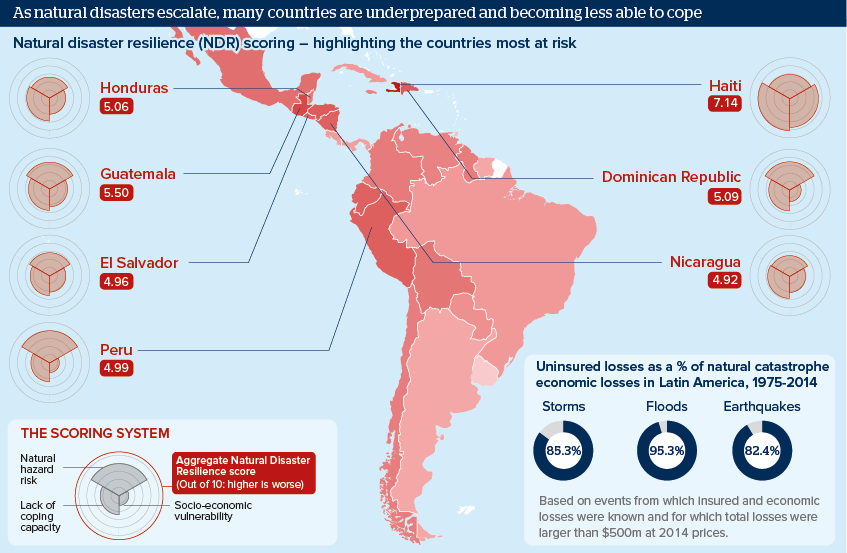Under-investment leaves Latin America open to disaster
Natural phenomena threaten much of Latin America, and the damage they cause will depend as much on money as on nature

Source: Inform Index for Risk Management, Swiss Re Economic Research, Oxford Analytica calculations
Outlook
Natural disasters are inevitable in Latin America, and while major events are still rare, they will become more common and severe as global warming intensifies. Aside from human and financial losses, possible effects include disease, increased poverty, migration surges, political unrest and rising crime.
Urbanisation will increase risks, with densely populated areas exacerbating death tolls. City planning requires strict regulation, particularly in earthquake-prone centres such as Lima, Santiago is a successful example.
However, in a region broadly affected by corruption and financially constrained governments, disaster preparedness is unlikely to get the resources it needs in other areas. Damage could be catastrophic and with insurance coverage low, poorer countries in particular are at risk of lasting damage from even medium-level events.
Impacts
- International and non-governmental organisations will struggle to deal with the increasing frequency and intensity of natural disasters.
- A harsh El Nino will compound difficulties this year, with drought and flooding triggering localised food shortages and health risks.
- Pressures on populations following disasters could lead to political unrest and increased criminal activity.
- A failure to regulate construction projects and prevent illegal builds could greatly increase casualty rates.
See also
- Mexico flooding presents long-term challenges - Sep 24, 2018
- Colombia’s landslide death toll looks likely to rise - Apr 21, 2017
- Political gridlock will cripple Haiti's healthcare - Aug 10, 2016
- El Nino impact will vary in Mexico, Central America - Sep 15, 2015
- More graphic analysis